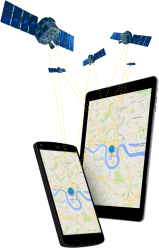The European Commission has introduced free, downloadable and ready-to-use software tools to help anyone develop enhanced location and timing applications that harness the power of Europe’s European Geostationary Navigation Overlay Service (EGNOS).
EGNOS, which began operations earlier this year, provides real-time satellite-based corrections and integrity monitoring for GPS satellite signals.
The European Commission has introduced free, downloadable and ready-to-use software tools to help anyone develop enhanced location and timing applications that harness the power of Europe’s European Geostationary Navigation Overlay Service (EGNOS).
EGNOS, which began operations earlier this year, provides real-time satellite-based corrections and integrity monitoring for GPS satellite signals.
Integrating EGNOS capabilities into GNSS-based positioning applications can be a time-consuming endeavor. For receiver manufacturers and mobile phone developers, the EGNOS Toolkit contains free source code, allowing the easy integration of EGNOS capabilities into mobile devices.
The EGNOS Toolkits, available on the EGNOS portal website, include easily downloadable software packages, demo applications, and other supporting materials, allowing application developers, researchers, university students and others to create, use and maintain EGNOS-capable positioning applications.
Along with EGNOS-enabling software tools developed under the EU 7th research framework program-funded projects, “SIGNATURE” and “PEGASE,” the new EGNOS software development kit (SDK) provides an easy way incorporate all EGNOS corrections and integrity capabilities, allowing developers to perform real EGNOS integration directly into a smart phone. According to the EC, the EGNOS SDK is a highly flexible tool that works with different operating systems, including Android, Apple and RIM.
The EGNOS SDK (core software, demo application, documentation) is now available for download from the EGNOS Portal website.
The core software provides a series of functions offering the possibility to make use of EGNOS corrections in any application in order to get a more accurate position and to develop innovative applications benefiting from the integrity feature. The demonstration application and the documentation will help developers by providing guidelines on the potential and how to use the core software.
In order to include EGNOS corrections independently from the EGNOS signal-in-space, the core software also includes functions to access the SISNeT service. SISNeT is a server that provides EGNOS corrections over the Internet as if they would have been received from the satellites.
A developer can use the core software in an application to easily make use of the EGNOS enhanced position via a single function call. The software requires GPS pseudo ranges as inputs, which are the raw one-way measurements of the distances from the GNSS satellites to the user’s receiver. Because the current generation of GNSS receivers for smart phones does not allow access to pseudoranges, the core software can be used on smart phones that employ Bluetooth to connect to an external GNSS receiver that is able to provide GPS pseudoranges. The first version of the core software targets the Android, Blackberry OS, iOS and Windows Phone 7 platforms, and is available in C, JAVA and C#.
The EGNOS SDK is a European Commission-funded project implemented by DKE Aerospace for the technical and structural design, development test and documentation and VVA – Valdani Vicari e Associati for market strategy, market research, and coordination aspects.




